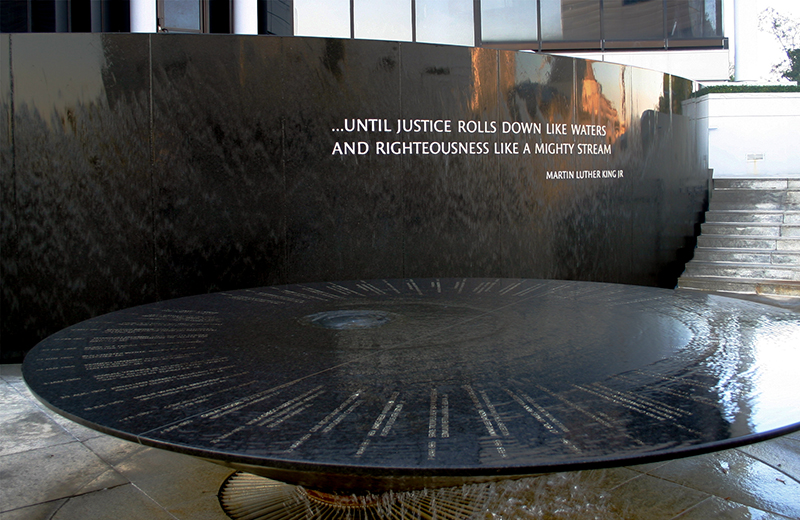By Mickell Carter
The Civil Rights movement of the 1950s- 1960s is a central part of American memory. Events and key figures in the Civil Rights movement have inspired the creation of films, TV shows, artwork, and architecture. When creating art, artists develop their interpretations to influence their work. It is up to the viewer to analyze both the artist’s intention and their personal interpretation of the art form and its deeper meaning. For instance, architect Maya Lin was inspired by Martin Luther King’s “I Have a Dream Speech,” where she quotes the book of Amos, “We are not satisfied, and we will not be satisfied until justice rolls down like waters and righteousness like a mighty stream”. Connecting the memorial with the quote, water is a central theme. The memorial seeks to honor those 41 persons killed during the movement between 1955 and 1968. It includes a brief history of the Civil Rights movement beginning in 1954 with the Brown v. Board of Education and ending with the assassination of Martin Luther King Jr., but gaps are left in the front and end of the timeline. Lin’s creation involved her personal interpretations of the Civil Rights Movement; however, monuments/memorials allow us to reflect not only on the artists’ interpretation but also on our understanding of American history.
When thinking about memorials like the Civil Rights Memorial and others, consider the following:
How do monuments shed light on how we remember movements?
What dates are included, and what are their significance?
Where is the monument located?
Which stories does the memorial embrace?
How do landmarks come to be?


